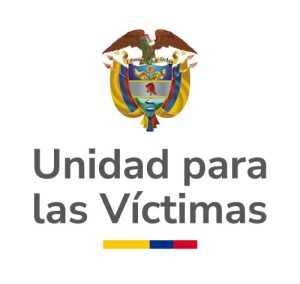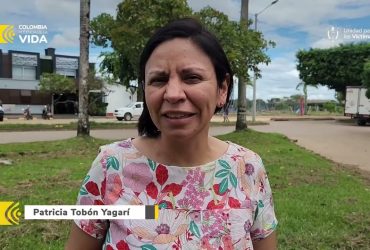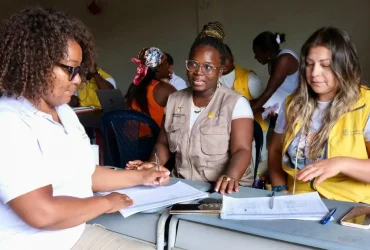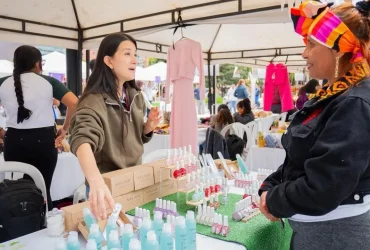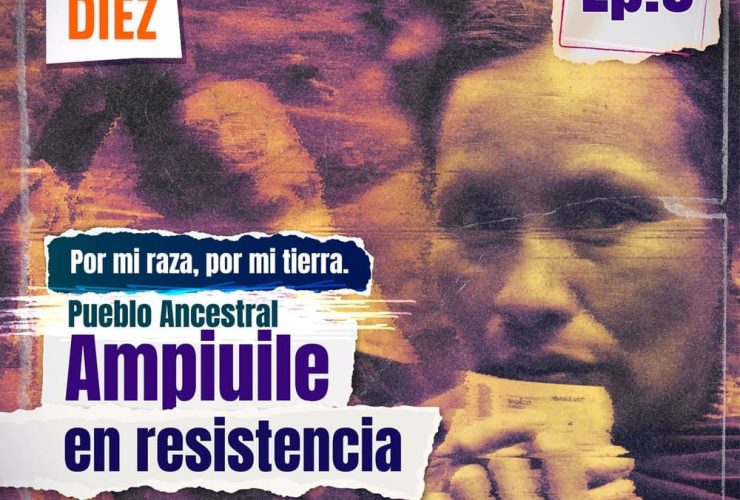On October 14, 2000, the paramilitaries who operated in Montes de María murdered 12 people by stone and stick during the macabre tour they made in the urban area of Macayepo rural district and neighboring villages, in the jurisdiction of El Carmen de Bolivar.
The paramilitaries stormed the territory under the pretext of recovering animals that had been stolen from a rancher in the area and, for two weeks before the massacre, they threatened the inhabitants to leave the area or they would die. The violence particularly affected the villages of El Limón, La Palma and Floral, causing a massive exodus in the region to Sincelejo.
One of the migrants was Aroldo Enrique Canoles Ramos, who along with his wife and five children fled from that massacre to the capital of Sucre. At that time Aroldo was 41 years old. He was born and lived in the Jojancito hamlet, an hour from Macayepo. His childhood was spent in the midst of poverty, in a family with nine siblings, who helped their parents in the fields, in which according to his memories «it was time to share a fish with yam and cassava among 12 people».
As an anecdote, his parents told him that when he was in his mother’s womb, the only means of transportation at the time was the donkey and that, on one occasion, on her return from Sincelejo, her belly hit a stick that had the saddle, which caused a sag in his head that he still has. «For that reason and for being born as the first boy, after my mother gave birth to two women before me, well I was quite busty (spoiled)», says Aroldo with a laugh.
In his first years of life he had a disease that almost killed him. «This is what they now call gastroenteritis, what happens is that at that time there was no way to diagnose because there were no health posts and the few hospitals were very distant».
He remembers playing soccer, years later, he met the Macayepo executioner, who commanded the October 2000 massacre: Rodrigo Mercado Pelufo, alias Cadena, second in command of the Block Héroes de los Montes de María of the Paramilitary Forces of Colombia, which he commanded alias Diego Vecino. Cadena was born in Macayepo and they say that his hatred for the guerrillas began in 1989, when the EPL murdered a cousin in front of him.
In elementary school, Aroldo was good at homework and exams, but he carried the resignation of not continuing high school. However, a teacher who came to Macayepo supported him and took him to Barranquilla to finish high school. His intention was to study a university degree on a scholarship, but that desire was diluted by love: at 19 he married and his wife became pregnant, a situation that forced him to work for a period of time in Sincelejo and Santa Marta until he decided to return with his wife and daughter to Jojancito, the Carmera village that saw him born, to dedicate himself to agriculture with his father and father-in-law, while his family grew.
War comes
The eighties were advancing and illegal armed groups began to arrive in the region: the EPL was the first, then the PRT, the Quintín Lame and, finally, in that decade, the ELN. “Around here there was no authority and their discourse penetrated the poor people. Towards 1987 the ELN began to kidnap people in the region”, remembers Aroldo.
His memory assures that in 1992 the FARC arrived, a fact that spread fear in the region due to selective homicides and forced displacement of some families who were forced to leave the area. «There was a moment when the anguish was such that at night I did not sleep with my wife, but with my brother we took turns guarding the house, in Jojancito».
By the year 2000, exactly the first days of October, rumors grew in and around Macayepo of a possible paramilitary incursion. «We, as Christians, met to pray with an aunt in Jojancito and there we slept up to 25 or 30 people because of the fear that the night gave us». Rumors of a paramilitary incursion motivated several people to leave Macayepo in trucks; However, on the road to the Chinulito district, there were guerrilla and paramilitary checkpoints, in which some people were murdered.
So Aroldo agreed with his wife to leave the region out of fear. “After noon on Friday the 13th, when I went out to one of the crops, I saw that on the sides of El Limón hamlet they were already setting fire to the houses. I came back and told my family: ‘get ready, we’re leaving tomorrow.’
«On Saturday the 14th we set up the tthree mules and a donkey that I had and we left to Macayepo, and at 8 in the morning we were already there. Around ten o’clock in the morning a large group of people came to the village from different hamlets. The women in nightgowns, the children barefoot and the men in shorts, all fleeing from the paramilitaries. The owner of the truck, which would take us to Sincelejo, did not want to bring all the people up because he said that the car was damaged”, emphasizes Aroldo.
The truck of life
In his flight, “that car was rattling everywhere. The road was just mud. they had to get down to push the car so often. I was with my wife and my six children, one of whom was quite ill, weak. At one of the stops made by the truck, my sick son and I couldn’t get on and the truck started. Initially, no one on board realized that my son and I were staying. Then we start to scream and run as best we could because my son was sick and he would tell me «I can’t take it anymore, dad» and I would tell him: «run, son, run.» The fear of staying was very strong because we knew that the paramilitaries at that time were killing the people of Macayepo and its hamlets”, recalls Aroldo.
It broke his soul to see his son like this, trying to run with his little strength and with the anguish that his screams would be lost behind the truck. Finally, “after almost two kilometers the car stopped because my wife and my other children realized that we were not going there, and then the driver waited for us. We got on again and everyone was crying out of fear. We arrived almost at night to Sincelejo, in our case at the house of my in-laws. That night we hardly slept telling what had happened to us», he says.
The next day, Sunday 15, Aroldo and his family went to San Juan Nepomuceno to a Christian congress, an event in which they found more people who had also fled Macayepo. «We all commented that they killed such, that they burned such people’s houses». At the event, Aroldo spoke with other attendees who, upon hearing his story, convinced him to go with his family to work on a farm in Turbaco, Bolívar.
At the same time that this was happening, the paramilitaries imposed their brutality: they set fire to houses and murdered people, mainly in Floral and El Limón hamlets, and in the head of Macayepo they hanged a person with barbed wire; in total, 12 people were killed in the town and its surroundings, most of them with stone and stick.
In the region it was commented that they did not use firearms to avoid the attention of the guerrillas who prowled the area. The massacre was commanded by Rodrigo Mercado Pelufo, known as Cadena, who had been born in Macayepo about 35 years ago. As days went by, only two families were left living in the town.
One of the people killed in Floral hamlet was Orlando Oviedo, who was the husband of Aroldo’s cousin. “He was a farmer and father of three children, a helpful person with a good sense of humor. His death hurt me a lot, they burst his head with a pylon (a stick used to stack rice)”, he recalls.
They were there for two years and in April 2002 he tried to return to Jojancito. However, he says that one day the guerrillas came looking for him to assassinate him because for them, he collaborated with the paramilitaries.
“We finally settled in a farm near Sincelejo, where I worked to support my family. One day my father-in-law told me that in the farm that he had abandoned in La Sierra, near Macayepo, the guerrillas were harvesting avocado crops, which were the most profitable crop of all those that grew in the region».
Return
As a result, in May 2004 an experiment was made of getting into helicopters of the Public Force to collect the avocado harvest on various farms. “We agreed to this after reaching an agreement with about 50 peasants from the region. After that experiment, the idea of a massive return to Macayepo took hold”.
In those days his brother Alberto disappeared on the road that leads from Jojancito to Macayepo. His lifeless body was found a year later, for which he blames the guerrillas.
Finally it was agreed to return to Macayepo for December 2004 and also that in September of that year there would be a cleaning of the town. “We created the Association of Agricultural Producers of Macayepo (Asopram). I have been a legal representative for 16 years and I am a community leader, a kind of authority in the town”, says Aroldo with pride.
At the same time, the people who had already arrived in the town began to work cleaning and preparing everything for the return of the families, a fact that finally happened on December 21 of that year.
“At first, we placed up to three and four families in the same house in Macayepo. Over time, each one in his home, but it was scary to go to the sidewalks and when we went to harvest crops we did it accompanied by the National Navy”, he assures.
Then came the tranquility: the demobilization of the paramilitaries, the death of Martín Caballero, leader of the Farc in the entire region of Montes de María, and the demobilization of the Farc, in 2017.
At present, Aroldo continues as the leader of Macayepo without neglecting the cultivation of yams, cassava and corn, in Jojancito and on an 11-hectare farm that the Incoder gave him.
A few days ago he received his compensation from the Victims Unit as a victim of armed conflict. However, he emphasizes that he has that money «still.» «I am taking the necessary time and seeing investment possibilities», he reiterates after thanking the entity for the psychosocial programs it has carried out with that community that seeks to recover the social network that was lost by the war.
Today, Macayepo is a transformed town; It is a quiet region and the properties have been appreciated. «It was worth everything we did to get back,» says Aroldo. Thus, Macayepo is a clear example of how hope can flourish from the ashes of war.

